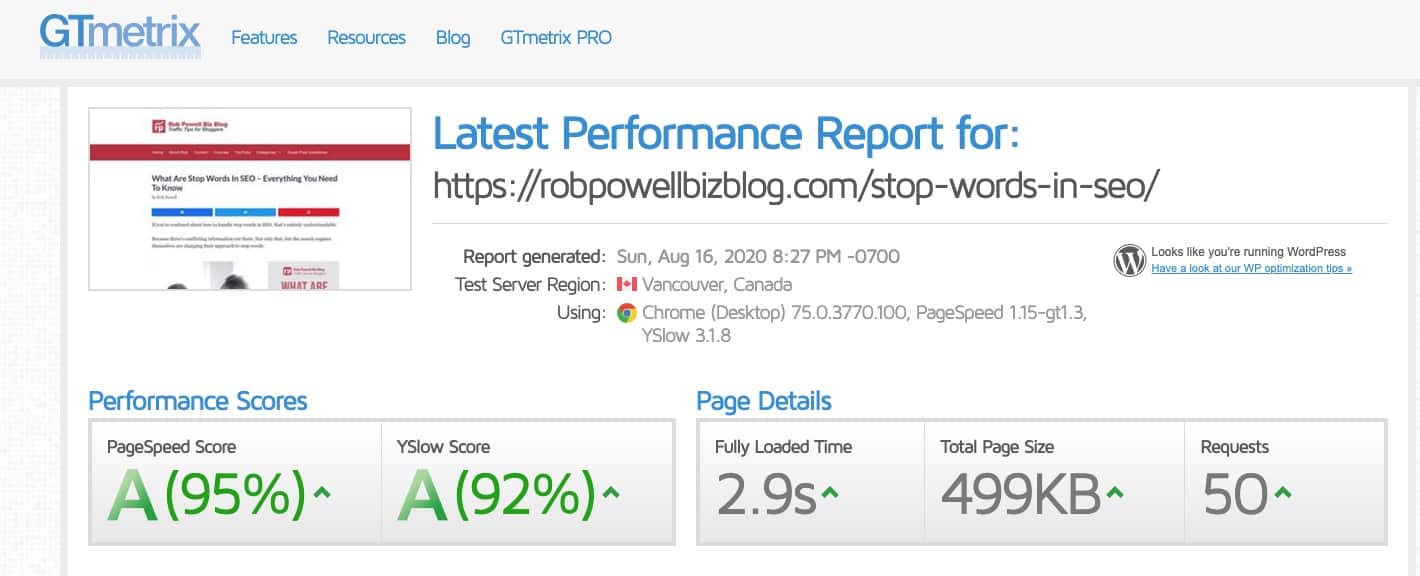I’ve been looking for a good internal link-building plugin for years. So when I heard that Spencer Haws of Niche Pursuits had just released Link Whisper, I had to check it out.
If you’re not familiar with Spencer, he’s a successful blogger, affiliate marketer, and the creator of Long Tail Pro, one of the most popular keyword research tools.
- Why Internal Linking Improves Your SEO
- The Problem With Internal Linking
- Introducing Link Whisper
- How Much Does Link Whisper Cost?
- Installing Link Whisper
- Link Whisper Features
- Link Whisper Pros and Cons
- Does Link Whisper Slow Down Your Site?
- Link Whisper Frequently Asked Questions
- Conclusion
- More Product Reviews
In this review, I put Link Whisper to the test to see whether it lives up to its promises.
But before I get to the details, let’s look a bit closer at internal linking. Why is it so important?
Why Internal Linking Improves Your SEO
Most SEO experts agree that internal linking is an SEO power technique. Internal links spread the flow of PageRank around your site – the more internal links a page has, the higher its PageRank.
For example, if you have a page that has good external backlinks, you can use internal linking to pass that link juice on to other pages on your site and give those pages a bump in the SERPs.
‘Search Engine Land‘ has published an entire article showing how internal linking alone can boost your search rankings. The fact is that sites with strategic internal linking rank higher than sites without internal linking.
The Problem With Internal Linking
If internal linking is so important, why do so many websites fail to do it? Well, the answer is quite simple: it’s tedious, painstaking, and time-consuming.
Here’s how I used to build internal links before Link Whisper. First, I would go through the article and pick out keywords that I thought were relevant to other articles on my website.
Then I would use a search operator on Google to find my published articles containing those keywords. Something like this:
site:robpowellbizblog.com keyword
That would give me a handful of pages that have relevant content and that I could link to from my new article.
But that’s only half the job!
I still needed to build incoming links to my new article. And this is where the real work begins!
You have to comb through all your previously published blog posts looking for articles that have content that’s relevant to the new blog post. Then you need to edit each of those articles, look for relevant anchor text, and insert hyperlinks to your new article.
You can see why most bloggers and online marketers simply never get around to internal linking. And that explains why the sites that have good internal linking are websites that have a large staff – they can afford to pay someone to do this time-consuming (and tedious) work.
But for most of us, internal linking is a chore – we know we should be doing it, but we just don’t have the time.
Introducing Link Whisper
Link Whisper is a WordPress plugin that helps you create internal links between your blog posts, using Artificial Intelligence (AI).
Is this the first internal linking plugin for WordPress?
By no means – before Link Whisper appeared, there were already two or three internal links plugins.
But there was a problem with these plugins – they made sitewide changes based on very crude keyword matching. The result was masses of internal links using the same anchor text. This creates what Google calls “unnatural linking patterns,” and it can get you a Google penalty.
And this is where Link Whisper is different.
Firstly, it uses AI to find intelligent linking opportunities that take into account context. And secondly, Link Whisper gives you complete control over what pages to link to and what anchor text to use in the link.
Link Whisper scans your entire site when you install it and then keeps scanning whenever you add a new article or blog post. It builds up a database of link suggestions and lets you choose which links to use.
It’s important to emphasize that Link Whisper only partially automates your internal linking. You still have to approve each link, and in the process, you can edit the anchor text that will be used in the link (and BTW, you should never use a fully automated internal linking plugin – you always need to be able to vet and approve each internal link).
How Much Does Link Whisper Cost?
A big factor when considering any new plugin is the cost. This is especially the case if you’re already running 10 or 15 premium plugins – the cost begins to add up.
Link Whisper is a pleasant surprise, coming in at just $77 per year for a single site, $117 for three sites, and $167 for ten sites.
That comes to $6.40, $9.75, and $13.90 per month, respectively. When you take into account the time this plugin will save you and the potential SEO advantage you’ll get from having proper internal linking, that’s not a huge outlay at all.
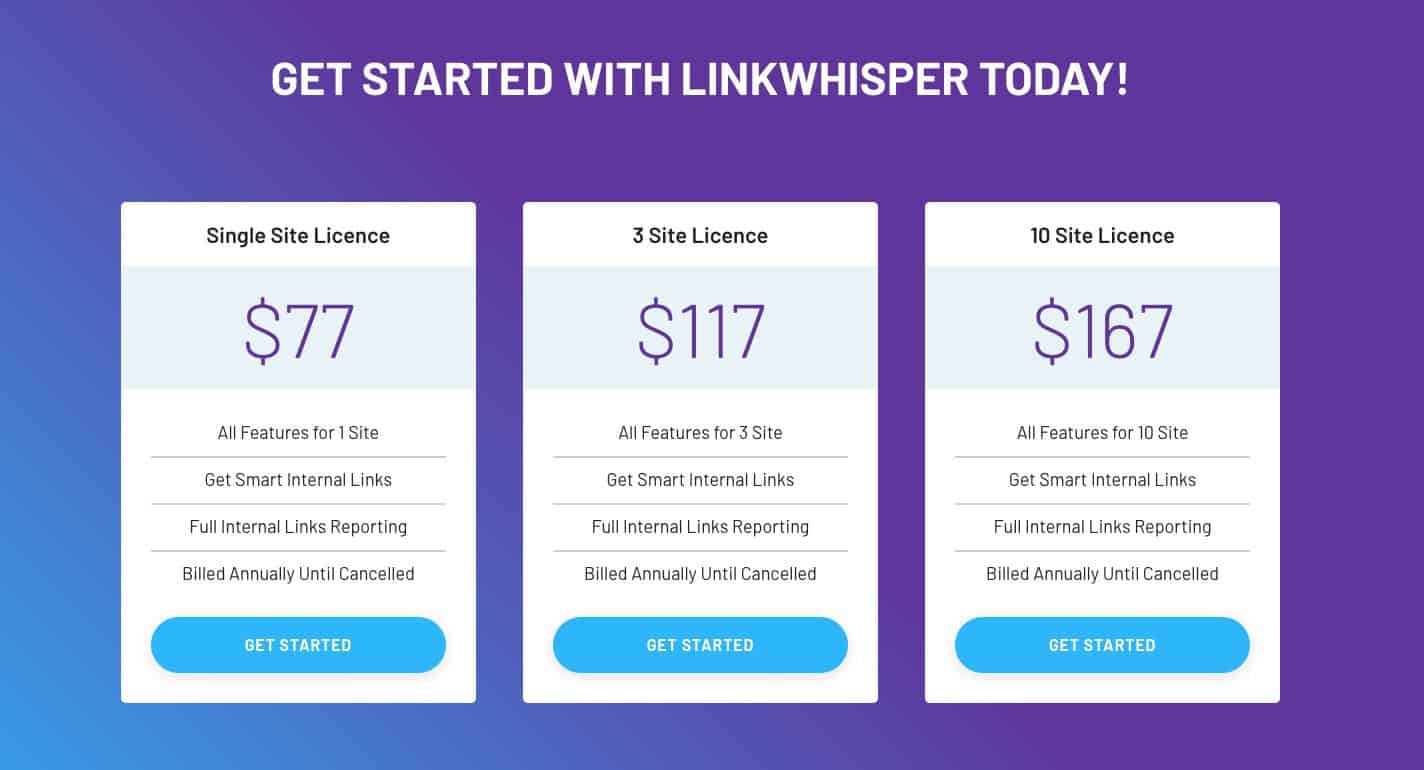
Copy this COUPON CODE: robpow10 and Get $10 Off Link Whisper
Installing Link Whisper
When you install and activate Link Whisper, the plugin scans your entire website. If you only have a hundred or so posts or pages, this won’t take long. But if you have thousands of pages and posts, it could take a while to complete.
Once the scan is complete, you’ll see the Link Whisper reports:
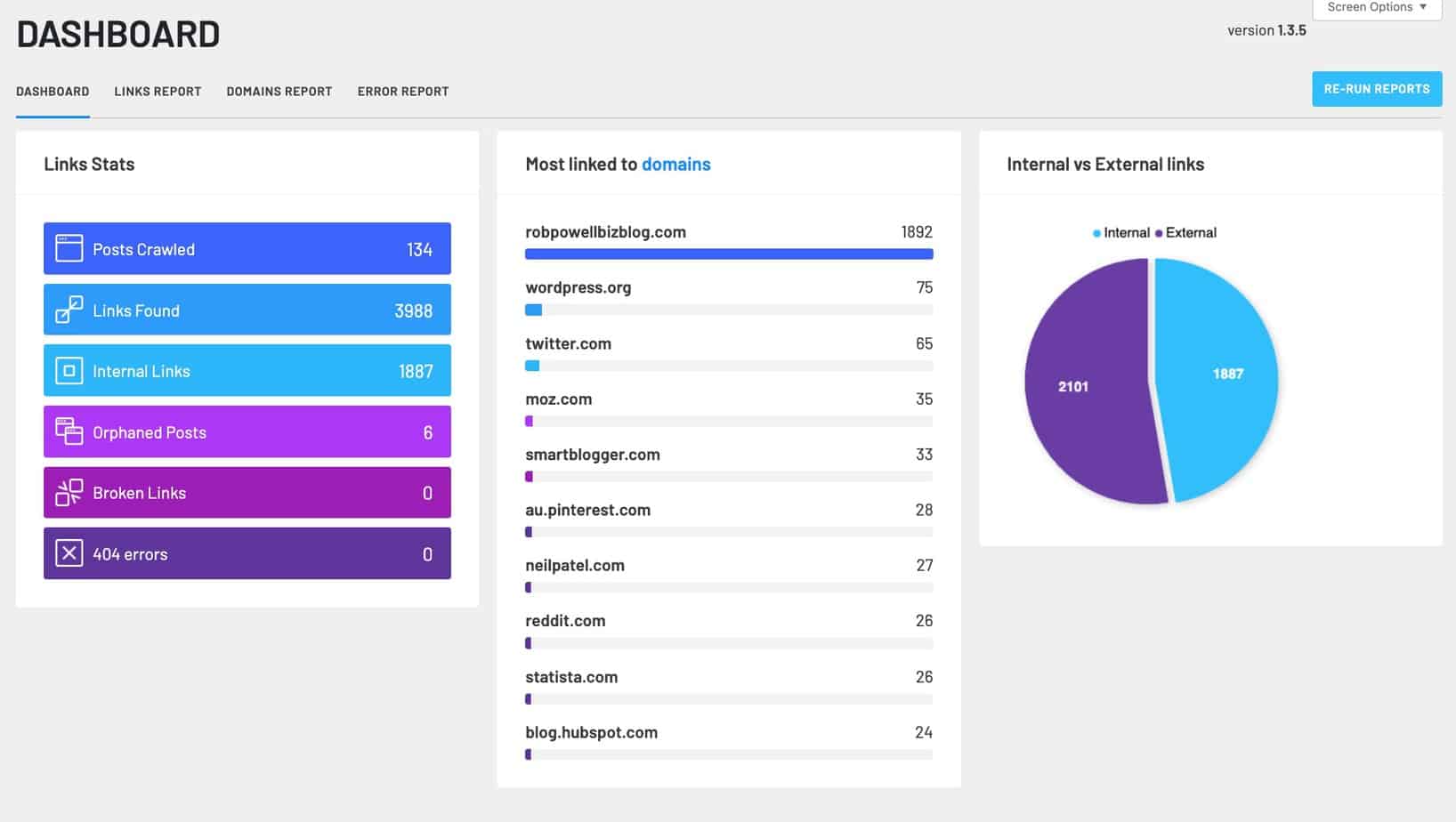
This is a very simple plugin, and there aren’t a lot of settings that you need to configure. But there’s one setting you need to look at – you need to specify any words, posts, or categories that you want the plugin to ignore.
Link Whisper Features
Adding outgoing internal links
In the edit screen of each blog post, you’ll find a Link Whisper module that contains suggestions for blog posts that you could link to from the current blog post. In the left column is the suggested anchor text and in the right column is the suggested link:
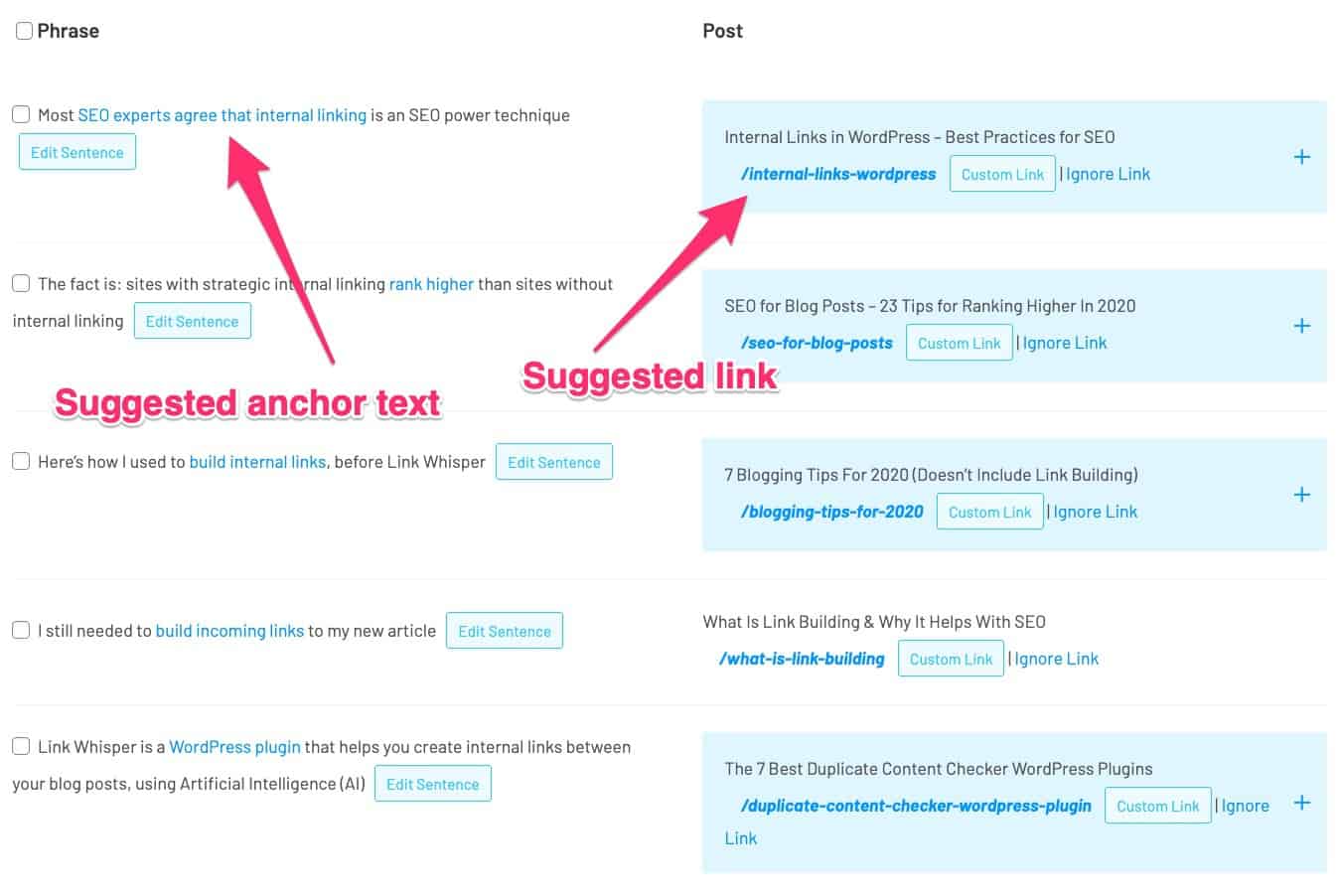
Each suggestion has a checkbox next to it – tick the box to insert the link or leave it blank to ignore the link.
In most cases, Link Whisper offers more than one linking suggestion for the same anchor text. These are marked with a blue box (when the background is white, it means there is only one link suggestion).
If the box is blue, just click on the plus sign and then choose the most appropriate link. LW also allows you to edit the anchor text for the outgoing link.
Adding incoming internal links
As I mentioned earlier, each new blog post you publish needs two kinds of internal links: outgoing and incoming.
Adding outgoing links to new blog posts manually is quite a job. However adding incoming links from your existing blog posts to the new blog post is a huge amount of work.
This is where Link Whisper really shines. Just click on the ‘Add Inbound Links’ button, and the plugin will offer you a selection of possible links from published blog posts to the new blog post. It’s hard to quantify how much time this feature saves you – suffice to say that without Link Whisper, most people would simply never get around to adding Incoming internal links to their new blog posts.
But those Incoming Links are what exactly your new blog post needs in order to rank well in Google: link juice from your other blog posts that already rank on Google and already have PageRank
Adding internal links in bulk
When you first install Link Whisper, you’ll have to add internal links across all your published blog posts. To do that, you need to use the Links Report in the Dashboard. This is a screen that lists every blog post on your website, together with the number of outgoing and incoming links for each post. You can sort these two columns from high to low (and vice versa), so as to see at a glance which posts need links added to them.
Building links between posts with the same category or tag
In the Link Whisper module for each blog post, there’s an option to only see link suggestions in the same category or with the same tag:
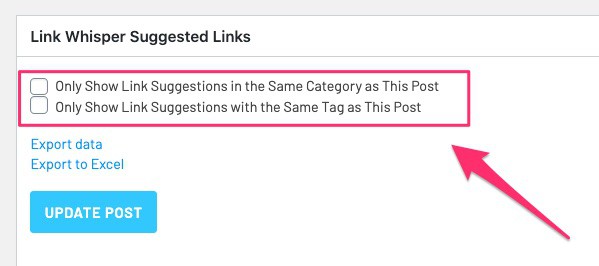
This is a very useful feature because it allows you to build links within a topic cluster. As you may know, topic clusters are a powerful SEO technique that will help you rank higher in the search results.
URL Changer
This feature allows you to change the URL of a blog post. This is not a 301 redirect – it actually changes the URL:

You also have the option to undo the change at any time, and go back to the original URL. This would be useful if you need to make structural changes across your website.
Automatic Linking
This feature allows you to set up a rule so that every time a particular keyword occurs, a specific internal link will be added to that keyword. There’s also an option to add the link only once within the same blog post:
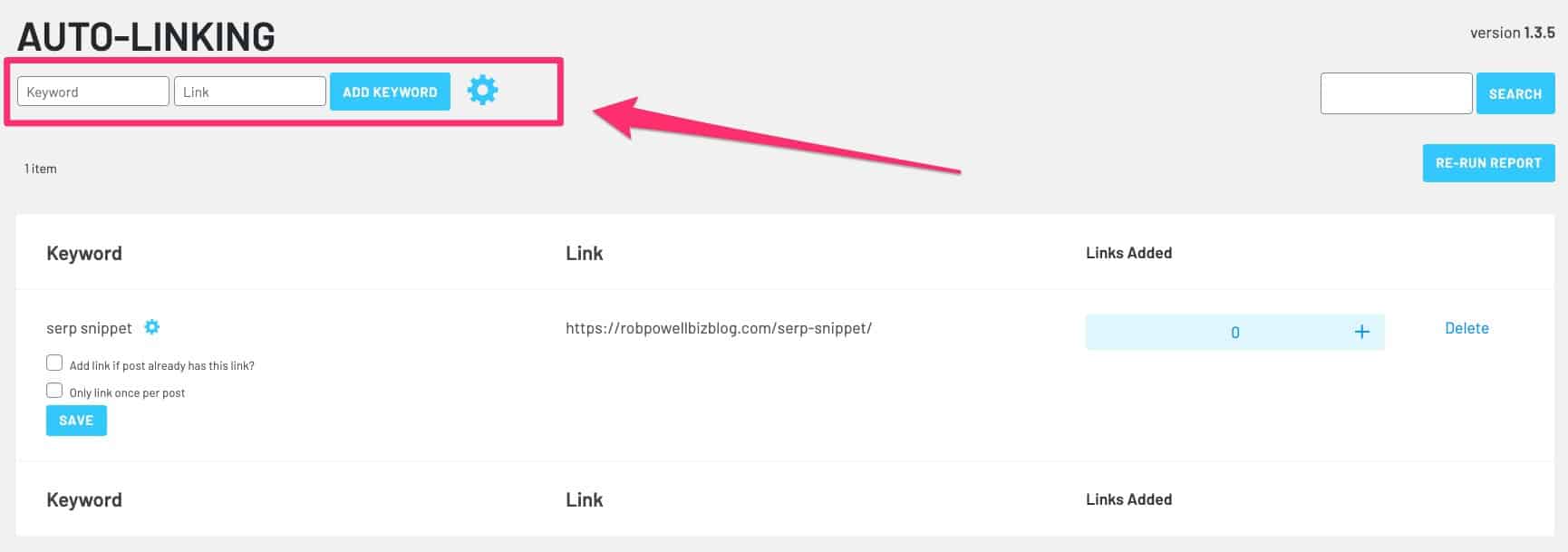
This is useful for building sitewide links to particular URLs for every mention of a specific word or phrase. For example, you could use it for articles that you want to build a lot of links to, using a particular keyword or phrase.
But use this feature with caution because it could create an unnatural linking pattern and trigger a red flag in Google.
Link Whisper Pros and Cons
Here’s a quick summary of the Pros and Cons of Link Whisper (for a more detailed explanation of these points, see the text below):
Pros
- Build internal links fast
- Gives you full control over anchor text
- You decide which links you want
- Most of the suggested links (over 60%) are relevant
- Multiple suggestions for the same anchor text
- The code is clean
- No problems if you remove Link Whisper
- Works well with all major page builders
Cons
- Link suggestions for headings
- Some of the suggestions are not relevant
- No external link suggestions
In Summary
There are not many WordPress plugins that I regard as indispensable, but this is one of them. Link Whisper has already saved me a ton of time. As for SEO, it’s hard to tell – my rankings have increased since I installed LW, but I’ve also been making other changes on my site, so its hard to know how much is LW and how much is due to other factors. My overall assessment: you won’t be wasting your money when you purchase Link Whisper.
Link Whisper Pros
Build internal links fast
The biggest plus is simply that Link Whisper does in seconds what would otherwise take up a big chunk of your time.
Full control over anchor text
Anchor text is something that Google watches very closely for signs that a website is manipulating the algorithm. That’s basically what the Penguin Update was all about. The thing you need to be most careful about is where the anchor text exactly matches the target keyword for the page that you’re linking to. So it’s important that you have control over the anchor text – this is a feature in Link Whisper that’s really important.
You decide which links you want
This is also really important – you never want to give control of your internal linking to a machine. That can quickly result in unnatural linking patterns. And that can damage your SEO and send your rankings down the tube.
Most of the suggested links are relevant
At least 60% of the link suggestions in Link Whisper are relevant. But, of course, with any AI algorithm, there are going to be errors. On the whole, though, the plugin makes highly relevant link suggestions.
Multiple suggestions for the same anchor text
Another good feature is that Link Whisper usually comes up with multiple link suggestions for each anchor text. Obviously, this will depend on how much content you have on your site – the more content, the greater Link Whisper’s ability to make multiple linking suggestions.
The code is clean
Unlike some linking plugins, which insert all kinds of javascript, the code that LW uses is clean, as you can see:
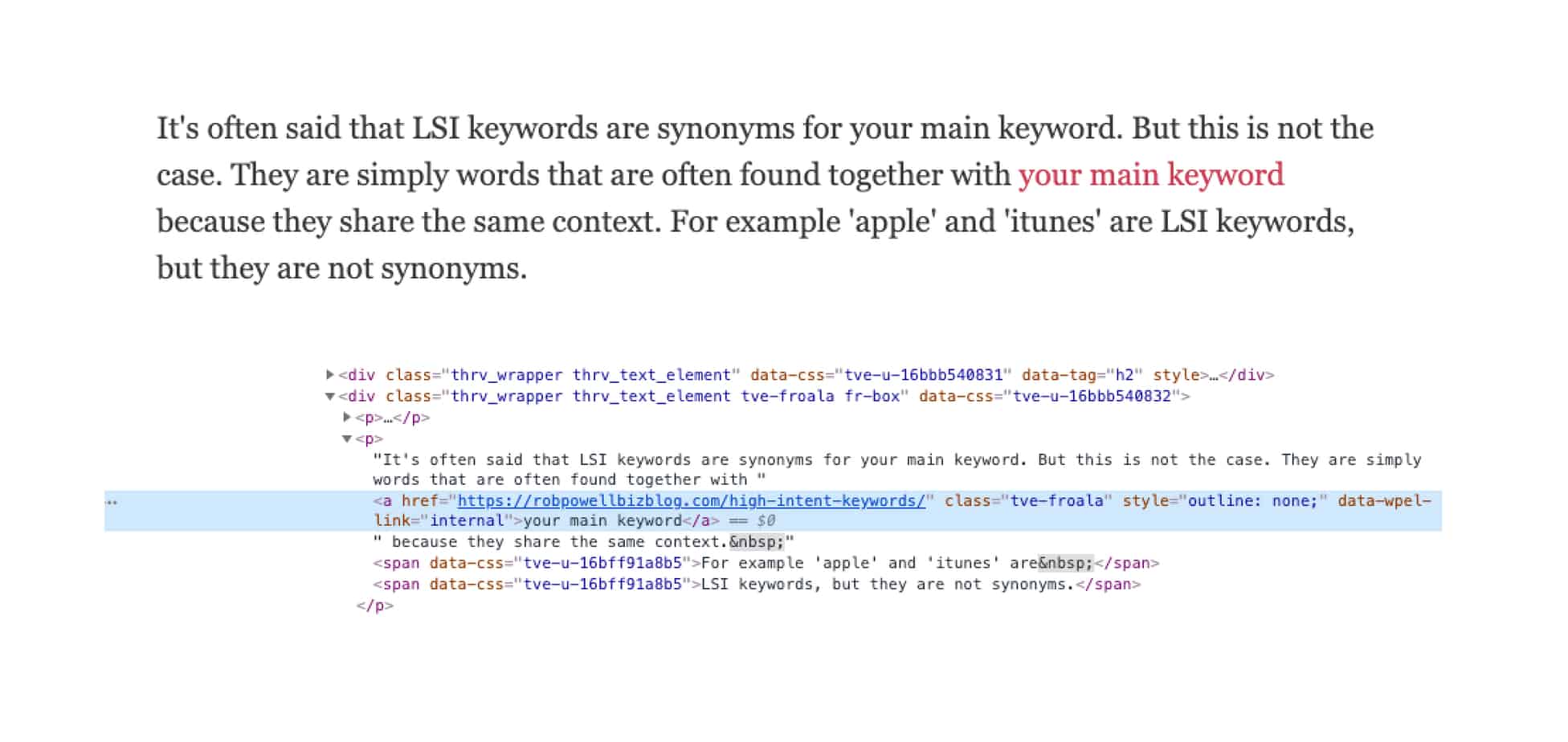
No problems if you remove Link Whisper
With some plugins, everything stops working when you remove them. Not so with Link Whisper. When you remove it, the internal links will remain and function exactly as they did before.
Works well with all major page builders
Link Whisper is compatible with all the major WordPress page builders, including the Classic WP Editor, Gutenberg, Beaver Builder, Thrive Architect, Elementor, WooCommerce, and Kadence Blocks.
Link Whisper Cons
Links in headings
I don’t like placing links in headings – so I would like the option to turn off link suggestions in headings and sub-headings.
Some irrelevant suggestions
Some of the link suggestions are not relevant, but this is a minority. And the plugin is getting more and more accurate with each update
No external link suggestions
Doesn’t suggest external links, but this is hardly a defect as Link Whisper is an Internal linking plugin.
Does Link Whisper Slow Down Your Site?
I’m slightly obsessed with SEO, so site speed is really important to me. I recently changed my
Rest assured: Link Whisper doesn’t slow down your site.
I ran a test on a sample blog post – for good measure, I tested the speed of the page in both Pingdom and GT Metrix.
These are the results:
WITHOUT Link Whisper Internal Links
GTMetrix
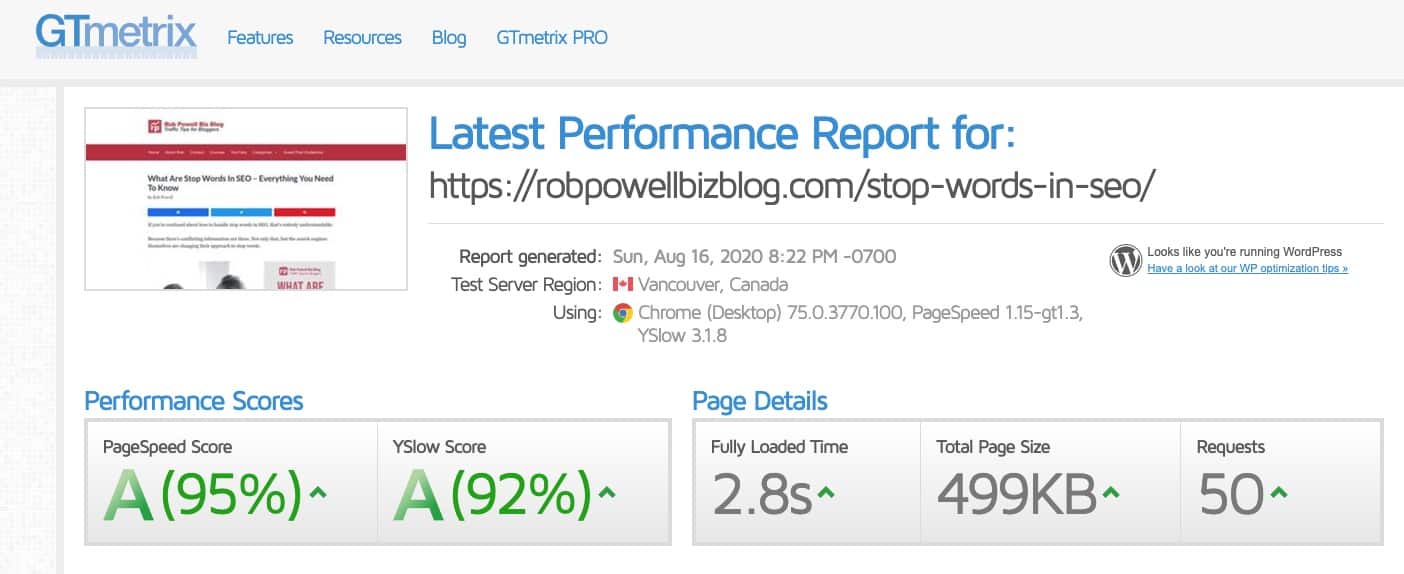
Pingdom
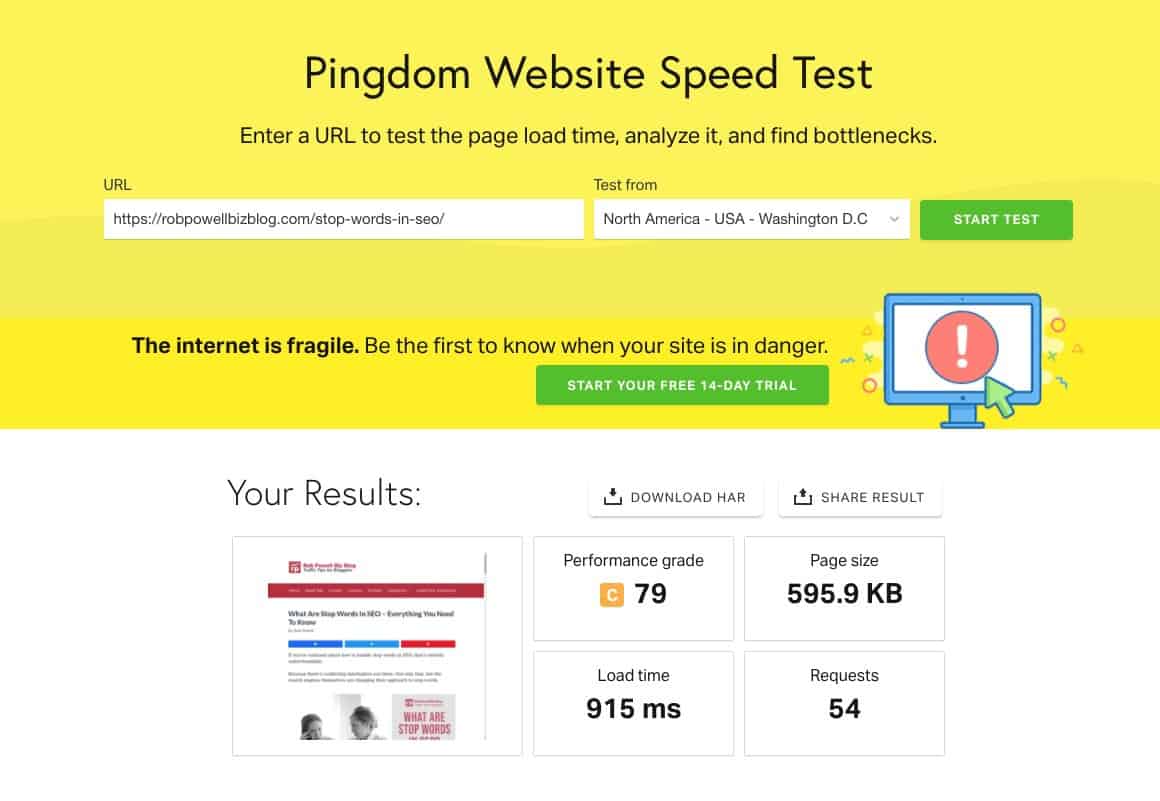
WITH Link Whisper Internal Links
GTMetrix
Pingdom
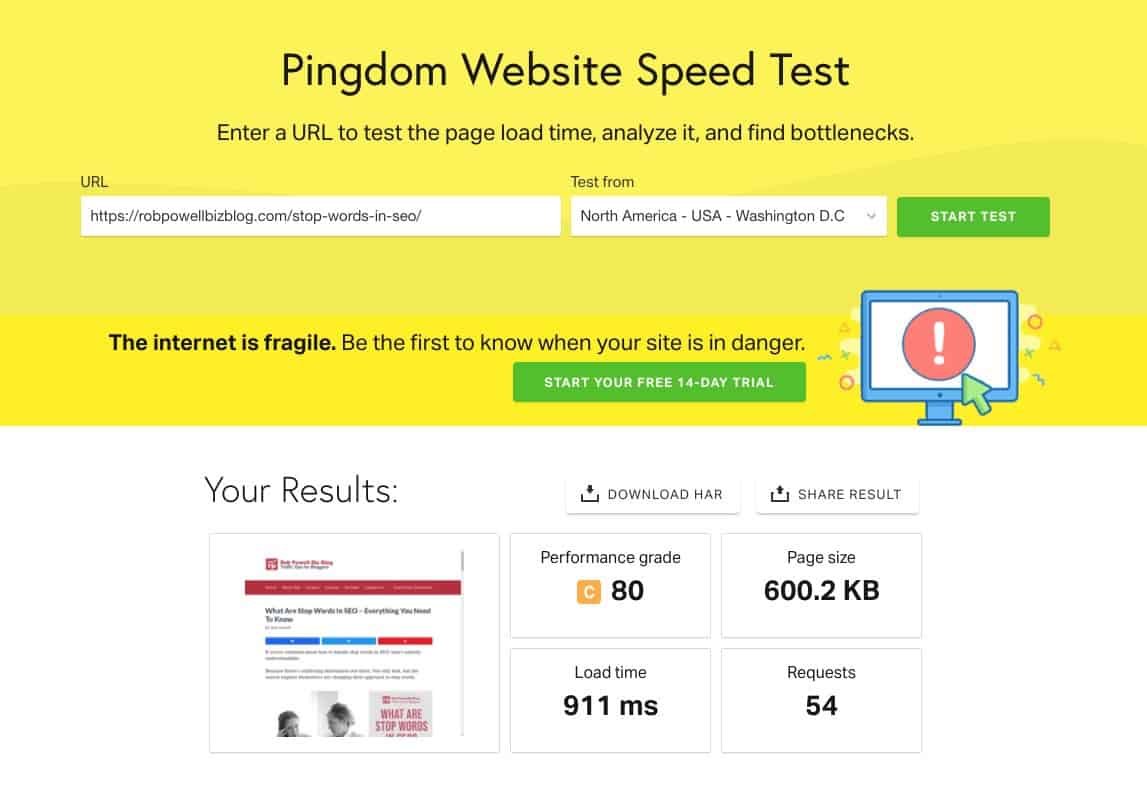
The result?
The load time in GTMetrix was 0.1 of a second slower with Link Whisper internal links, but in Pingdom, the load time was actually 4 milliseconds faster with LW internal links.
Both differences are negligible and most likely due to other factors. In a nutshell: Link Whisper’s internal links had no effect on load time.
Link Whisper Frequently Asked Questions
What if I want to remove links after I make them?
Internal links added with Link Whisper act just like any other link on your site. You can remove the links within your editor, just like you would any other link.
Will my links disappear if/when Link Whisper is deactivated?
No, they will not. The links you build stay in place. All your links will remain active even if you cancel or uninstall the plugin. In other words, they are like links you create manually – they are there until you remove them.
Will Link Whisper help me rank better in Google?
There’s no guarantee that LW will cause you to rank better in Google. But as I pointed out at the beginning of this review, internal links do have a positive impact on your rankings. If you’re like many bloggers, chances are you’re not currently doing internal linking in a systematic way. So if you use LW to go back through all your existing articles and insert smart internal links AND use it going forward to insert internal links in all your future articles, then my guess is your SEO is going to improve.
What is required to use Link Whisper?
Link Whisper is a WordPress plugin – so all you need is a self-hosted website that has WordPress installed.
What if I don’t like the link suggestions I’m getting?
You can customize the settings and fine-tune the types of links that LW suggests. For example, you can set certain words or phrases to be ignored. Having said that, in my experience, the link suggestions out of the box are already pretty accurate.
Does Link Whisper insert links in existing content?
Yes – when you first install Link Whisper, it’s going to scan the entire content of your website. Once the scan is finished, LW will present you with internal link suggestions for every post or page on your site (unless you have asked LW to exclude certain pages or posts).
How is Link Whisper different from other internal linking plugins?
There are other WP plugins that have internal linking, for example, Yoast SEO (premium version) and RankMath.
But Yoast SEO and RankMath are different from Link Whisper because (1) they don’t give you an overview of your internal links across all your published content, and (2) they don’t display linking opportunities for your previously published articles.
In Yoast, for example, the plugin will suggest internal links for the article you’re currently working on. But if you want to add internal links to all your previously published articles, you’ll have to go into each article one by one. There’s no global report that offers linking suggestions across your entire body of published articles (as there is in Link Whisper).
Also, while the premium version of Yoast SEO does suggest articles you could internally link to, it doesn’t come up with suggestions for the anchor text – it’s up to you to find the anchor text yourself. And the same goes for RankMath – no anchor text suggestions.
In fairness to Yoast SEO and RankMath, these are not primarily internal linking tools – they are SEO tools.
And that’s the real difference – Link Whisper is a dedicated internal linking tool – that’s all it does.
Is there a money-back guarantee?
Yes, if you decide that Link Whisper is not for you, just contact the people at Link Whisper within 30 days and you’ll get a full refund.
Conclusion
In summary, Link Whisper is a one-of-a-kind plugin that adds intelligent internal links to and from your blog posts. If you want to get a handle on an aspect of SEO that most bloggers never get around to, this plugin is a wise investment.
Is it worth the annual fee of $77?
Yes – when you consider how much time it would take you to manually add outgoing and incoming internal links for every blog post on your website, this is money well spent.
